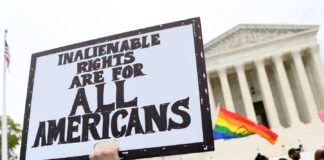While Rhode Island high school students report decreases in the use of some substances, mental health challenges persist for many adolescents in the state, according to new results from the Rhode Island Department of Health (RIDOH)’s Youth Risk Behavior Survey (YRBS).
The YRBS is an optional, anonymous survey conducted every two years in randomly selected Rhode Island high schools to provide a snapshot of how many students are engaging in behaviors or face challenges that may put their physical and mental health at risk. The survey also sheds light on student perceptions of their home and school environments. RIDOH uses these data to develop health programs that address the needs and challenges of Rhode Island youth.
“Supporting the healthy development of high school students requires us to have an accurate, comprehensive understanding of the issues they face. The Youth Risk Behavior Survey is an invaluable tool in our work to develop such an understanding, and to do all we can to help Rhode Island kids be healthy and safe,” said Interim Director of Health Utpala Bandy, MD, MPH. “The YRBS also helps us understand how students are disproportionately affected by different health issues. Understanding these disparities allows us to address the community level factors that affect students’ decisions and behaviors. All students in Rhode Island deserve an equal opportunity to be healthy.”
According to responses collected in 2021, 32% of respondents had ever e-vaped (a decrease from 49% in 2019) and 18% reported currently using e-vape products (a decrease from 30% in 2019). While alcohol use remained the same as in the 2019 survey, students reported decreases in:
–Ever smoking cigarettes
–Using any type of tobacco product (including cigarettes, cigars, smokeless tobacco, or e-cigarettes) in the previous 30 days
–Ever using marijuana and using marijuana during the previous 30 days
Students who identified as gay, lesbian, or bisexual (27%) or other/questioning (20%) reported higher rates of e-vaping, alcohol, and marijuana use. Rates of e-vaping and other substance use were higher among female students than males. Almost a quarter of 12th grade students who responded to the survey (24%) reported current e-vaping use.
The 2021 survey results indicate that 38% of students experienced feelings of sadness or hopelessness (up from 32% in 2019). But 22% of students reported receiving the help they needed when feeling anxious or depressed, a decrease from 33% in 2019. Fewer students said they had a teacher or adult at school they could talk to if they had a problem. Survey respondents reported less fighting and bullying on school property, but electronic bullying levels remained the same as they did in 2019.
Feelings of sadness and hopelessness varied across student demographic groups. Females (52%) were twice as likely as males (25%) to report these feelings. Additionally, students who identified as gay, lesbian, or bisexual (66%) and other/questioning (62%) reported higher rates of sadness and hopelessness than students who identified as heterosexual (29%). Students who did not identify as heterosexual or cisgender also reported higher rates of bullying than students who did identify as heterosexual or cisgender.
The 2021 survey included two new measures related to adverse childhood experiences (ACEs):
–One in three students (32%) reported that they have lived with someone who was depressed or suicidal.
–One in four students (24%) reported that they have lived with someone who was having a problem with alcohol or drugs.
RIDOH collaborates on the YRBS with the Centers for Disease Control and Prevention (CDC), the Rhode Island Department of Education (RIDE), and the Rhode Island Department of Behavioral Healthcare, Developmental Disabilities, and Hospitals (BHDDH). Students in randomly selected Rhode Island high schools responded to the anonymous survey in the fall of 2021. All respondents were in school full time and were not using remote or hybrid learning.
“The survey results show once again that we, as providers, advocates, families, and peers, must be attuned to the needs and circumstances of our youth and be ready to provide help or direct them to get help, if needed,” said BHDDH Director Richard Charest. “Substance use is always a concern, and when nearly one-third of our youth report living with someone who is depressed or suicidal, and nearly a quarter report living with someone who has a substance use condition, we know that this is going to create stress in their lives, and it is our charge to assist them in obtaining the services they need.”
Students who responded to the 2021 YRBS reported a decrease in sexual activity. Twenty seven percent of students had ever been sexually active (down from 41% in 2019), while 21% of students said they were currently sexually active (a decrease from 32% in 2019). In 2021, fewer students also reported receiving education about sexual health. Of survey respondents, 49% reported being taught about sexually transmitted diseases (STDs) and 56% reported being taught about HIV (a decrease from 72% and 77% in 2019, respectively). Five percent of students reported being tested for STDs, a decrease from 15% in 2019.
“The YRBS survey is a valuable tool that allows us to hear directly from our youth so that we can determine how we can better support their social-emotional, health, and academic needs,” said Education Commissioner Infante-Green. “We know the last few years have been especially challenging for youth not only here in Rhode Island, but across the nation. With this data and insight, we are better positioned to continue working closely with our State, education, and community partners to ensure our students have access to resources and tools that will allow them to grow and thrive.”
To view data from the 2021 YRBS, visit RIDOH’s website.
###








